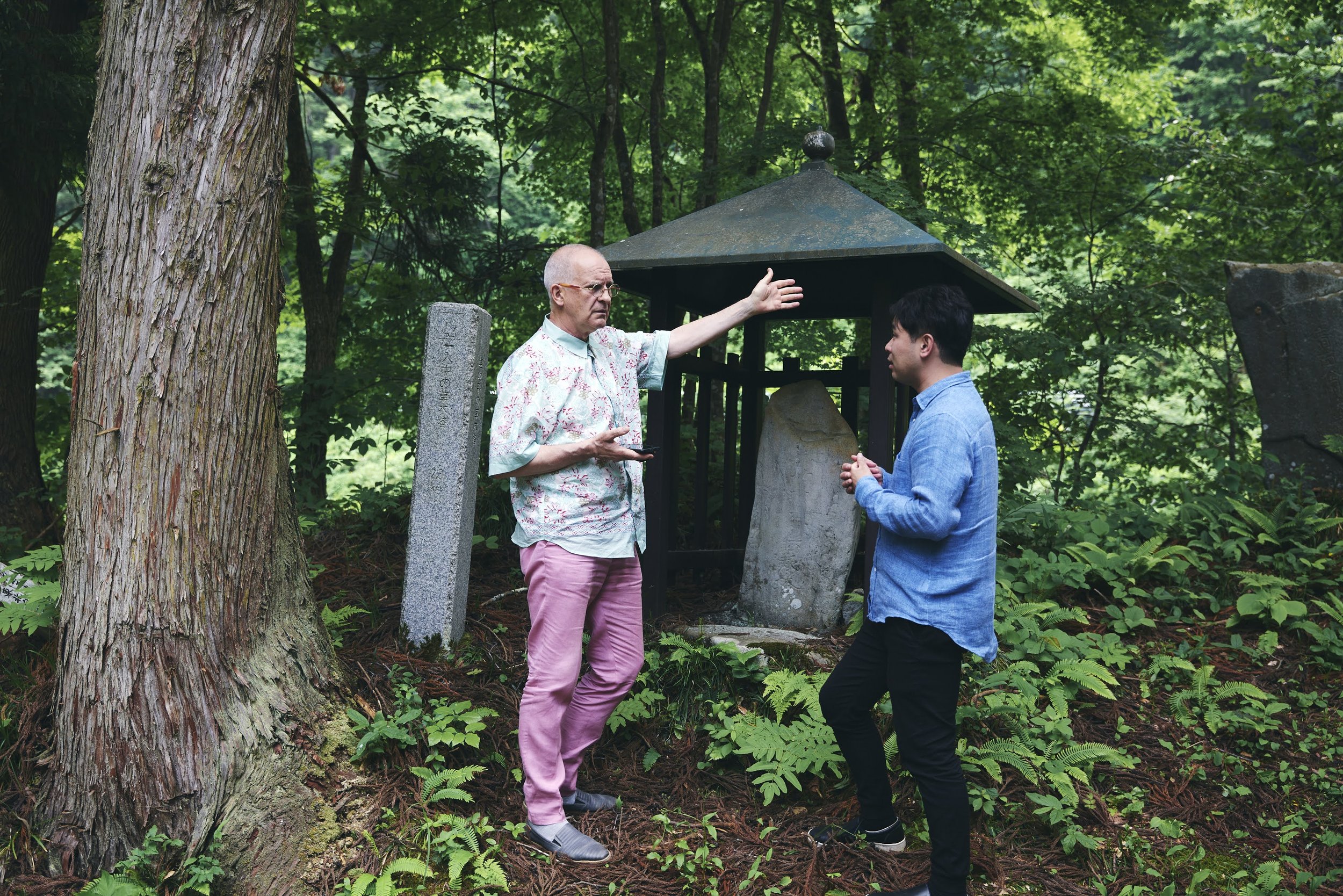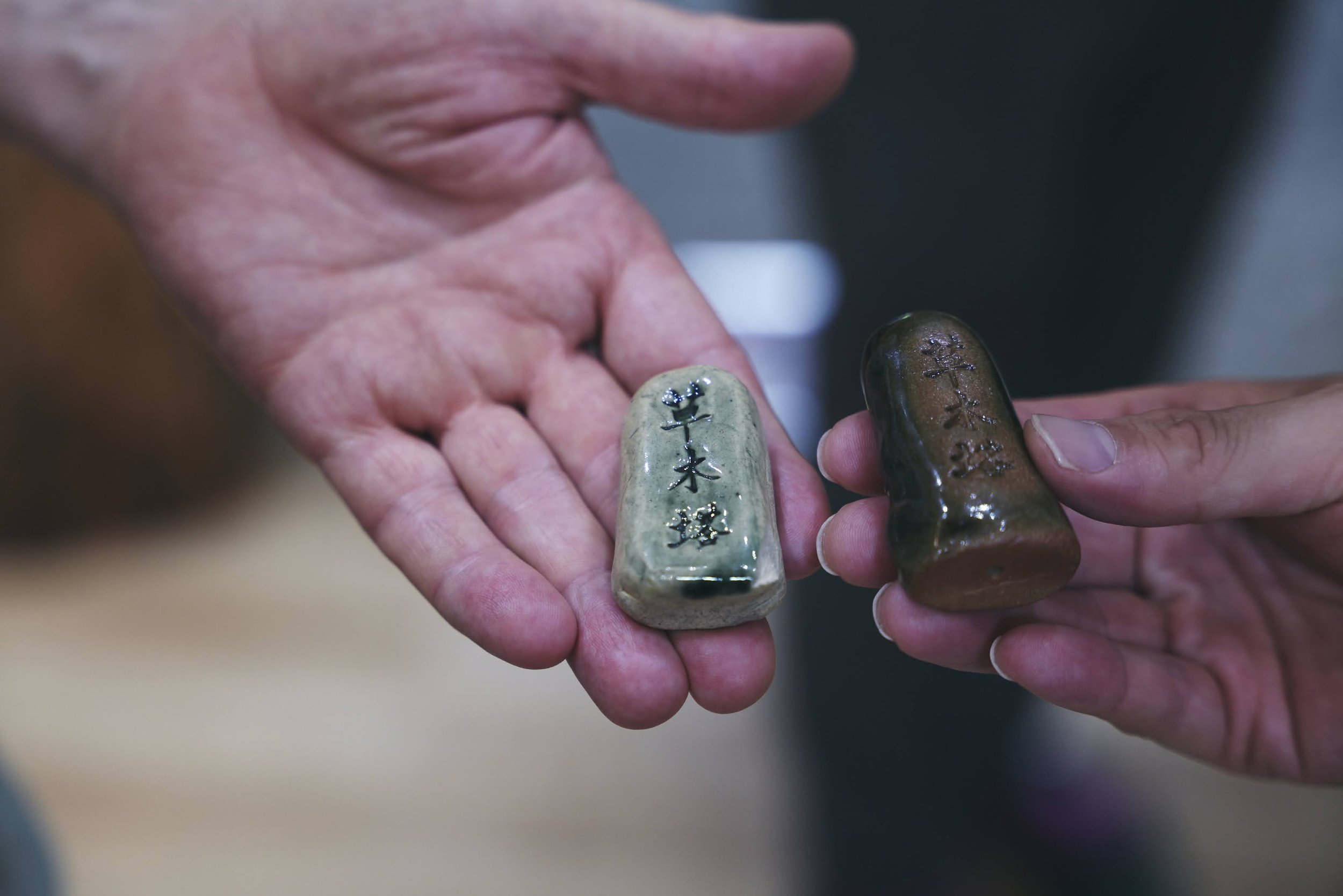Plants and Trees
Finding the true nature of somokuto in Yonezawa
A somokuto monument inscribed with the Chinese characters for “plants and trees” stands in a forest on the outskirts of Yonezawa City. (Photo: Plat Yonezawa)
A stone monument, two or three feet tall, with a simple inscription stood before me. It read: “plants and trees.” Somokuto, as they are known in Japanese, are monuments concentrated mainly in Okitama, a region in southern Yamagata Prefecture in Tohoku, the northern part of Japan’s main island of Honshu.
I first became aware of somokuto in 2014, when I visited the small community of Nakatsugawa, in the town of Iide, also in Yamagata. I was there as a judge in a national beautiful village contest, and my hosts felt that somokuto might interest visitors.
I was certainly intrigued. Although the phrase somoku (plants and trees) occurs in Buddhist sutras, I was told that the stone monuments were erected by members of the local community, mostly in centuries past and without the direct involvement of shrine or temple representatives.
But for what purpose? At the time, relatively little information was available about somokuto online, but I interpreted them in my own way, as an opportunity to say “please” or “thank you” when entering or leaving the forest.
Later, I became a community consultant in Iide and started to consider the souvenir potential of somokuto. Under the guidance of a local pottery instructor, I made several batches of ceramic mini-somokuto.
With his help, I also made a batch with a group at Denden, a facility in Iide for those with intellectual disabilities.
But I still knew little about the origins of somokuto. And so, when Ruth Jarman of Jarman International invited me to Yonezawa to spend an afternoon learning about somokuto with Yohei Sano, an expert on the subject, I leaped at the chance.
Left: The oldest somokuto in Yamagata dates back to 1780 and is found in the Tazawa district of Yonezawa City.
Right: Ceramic mini-somokuto produced by Denden in Iide Town. (Photos: Plat Yonezawa)
Sano and I went first to Shiojidaira, the site of a once-thriving logging community in the Tazawa district of Yonezawa. Here, I saw the oldest of the 140 somokuto in Yamagata (there are only about 20 elsewhere in Japan). It dates back to 1780.
In those days, the forests of Shiojidaira were a source of “official” firewood and timber for Yozan Uesugi (1751–1822), a famous local lord whose later admirers would include US President John F. Kennedy. After Uesugi’s large mansion in Edo (now Tokyo) burned to the ground in 1772, timber from Shiojidaira would have been used to rebuild it. A few years later, more would have been needed after a big fire in Yonezawa.
For the people of Shiojidaira, a bare mountainside must have been shocking. Have we done something unforgivable? Anxious thoughts of this kind may have culminated in the erection of the first somokuto as a requiem, perhaps, for lost greenery.
Sano explained that, as the years went by, interpretations of somokuto began to shift. They came to be seen as an opportunity to express gratitude to the forest, and later as a reminder to safeguard nature.
My own view of somokuto may be somewhat out of sync with their true nature, but if I’d never encountered them, I wouldn’t have had the chance to get to know Sano, an ideal recipient of the small gift that I gratefully presented to him: a mini-somokuto from Denden.




